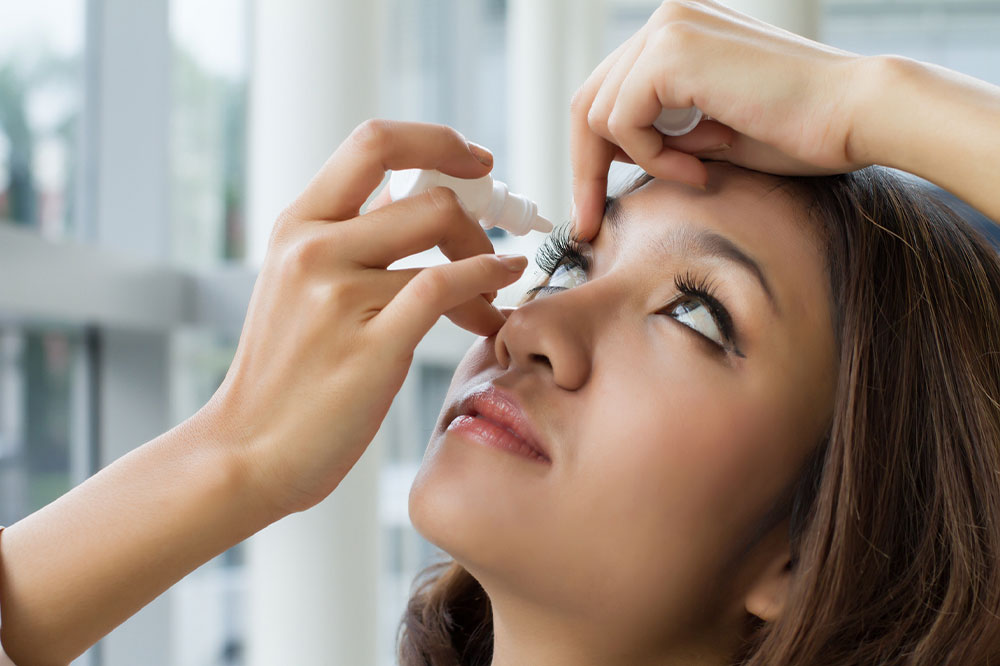
Techniques to apply eye drops properly
Eye drops are used for a variety of conditions, including dry eyes, redness, glaucoma, and other infections. These may be prescribed or one may use over-the-counter eye drops in minor cases. The condition it is prescribed for determines the duration of eye drop application. But, it is a medicine many people apply improperly. To that end, here are simplified steps to take eye drops correctly and which eye conditions may require them.
The right way to use eye drops
Whether you require eye drops for yourself or for a child or the elderly at home, these steps should be followed to ensure that the medication stays inside the eye and isn’t expelled.
Supplies one may need
Soap, water, tissues, and a sanitizer.
The ideal thing to do is to wash hands before putting eye drops to avoid infections or further complications. After cleaning the hands thoroughly and sterilizing with a sanitizer, one may proceed with the drops. It is recommended to keep tissues handy to wipe out the excess medication after application.
Preparation before using drops
After cleaning the hands, check the bottle for the seal, so you know it’s a brand new bottle and isn’t tampered with. Shake the bottle before use, and place the cap onto a clean surface when in use.
It is crucial to ensure everything is properly sterilized. This is because any eye condition, be it an infection, glaucoma, or simple redness, it can worsen due to the intrusion of an outside particle.
Putting the eye drops
Tilt the head back and rest it on a backrest or a pillow to get into a comfortable position. Pull the lower eyelid down, rather than pulling up the upper eyelid, to create a pocket for the drops. The eye drop bottle must be held close to the eye, while the hand can rest on the forehead to get into a stable position. Squeeze the bottle to allow the drop to fall into the eye. If multiple drops need to be administered to the same eye, it is advised to wait for at least five to ten minutes after putting the drops.
Ensure to follow the eye specialist’s direction on the number of drops.
After successfully taking the drops, close the eyes gently and face the floor so the medicine can evenly get absorbed by the eye. It is vital to remember to avoid squeezing your eyes too tight, avoid blinking, and not move the eyeball. Apply gentle pressure onto the corner of the eye to avoid the medicine from draining into the nasal passage. Use the tissue to wipe away the excess medicine, and wash your hands before putting the cap back on. Store the bottle in a place as advised on the label.
Common conditions eye drops are used for
Eye drops for dryness
Lubricating eye drops help create artificial tears to provide temporary relief from short-term dry eyes. Dry eyes may be caused due to excessive screen time, being in a dry region, or lack of sleep.
Eye drops for infections
Conjunctivitis is one of the most common types of eye infections for which a doctor might prescribe eye drops. The other types of eye infections may include viral conjunctivitis, which is characterized by red, watery, sore eyes. Severe cases may also involve a whitish discharge; bacterial conjunctivitis is a condition where the eye turns red and sore with a sticky discharge, while allergic conjunctivitis causes the eyes to appear almost bloody, making them turn watery and sore. However, allergic conjunctivitis is not contagious.
Eye drops for itchiness and allergies
Allergies and itchiness in the eye can cause redness, puffiness, and swelling. Antihistamine drops are used for these symptoms as they are formulated to combat histamines, which are compounds that are created by the body in response to allergens. Eye drops for itchiness, redness, and puffiness are easily available over the counter.
Eye drops for dry eyes-condition
People with dry eye condition experience pain with the movement of the eyeball due to lack of lubrication. The eye specialist, in this case, is likely to recommend drops for patients that they must use regularly in combination with home remedies like warm compresses. It is also recommended that people with this condition must sleep well to further avoid the complications associated with it.




